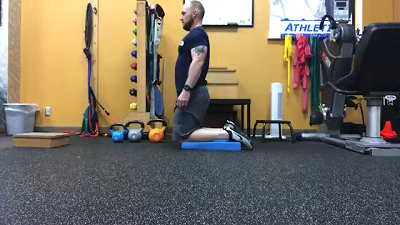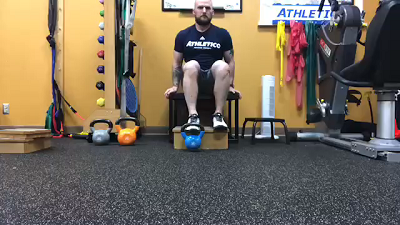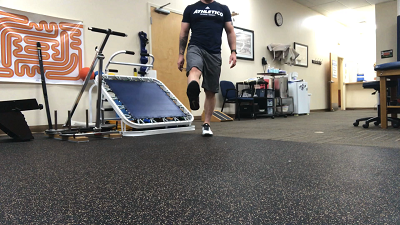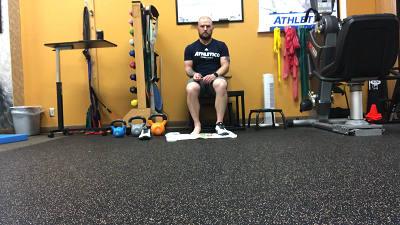What are Shin Splints?
Shin splints are typically caused by repetitive stress to the tibia (shin bone) and the connective tissue between the muscle and the bone itself. The pain that typically results from shin splints is a generalized aching in the front of the tibia while your foot is in a flexed up position. This discomfort may present itself while the athlete is participating in a sporting event, training or immediately following the activity. If this pain continues regardless of your activity level, if you experience numbness/tingling in the foot or if the skin in front of your shin bone becomes shiny and tight in appearance – contact your medical provider as this may indicate a condition that needs immediate medical attention.
What Causes Shin Splints?
There are several factors that cause shin splints. The first is a sudden increase in activity level or sudden change in intensity, frequency or duration of activity. In this case, we typically see shin splints present at the beginning of sports season such as soccer, football, basketball and track as the athletes have had a long period of reduced or no training and are suddenly back into the sport at full force. The second cause of shin splints could be having flat feet or high arches, which is dependent upon your anatomy or prior injuries to the feet. Having an arch that is too high or too flat can cause strain to the lower leg and cause changes in the mechanics of running, which can result in chronic injuries. This can be addressed by making sure you have the proper footwear to support your feet. Another cause of shin splints which is harder to control, is the type of surface you’re playing or training on. Training on uphill terrain or hard surfaces such as concrete can increase the risk of shin splints.
If I Have Shin Splints, What Can I do?
- Invest in proper footwear. Make sure the shoe you wear is made for the build of your foot. Shoes are typically meant to be worn for only 300-500 miles which, depending on your sport, could mean several new pairs of shoes a year. These are a great investment to help keep you in your sport or activity you love.
- Ease into your training once your sport season is about to begin. In this age of strength and conditioning, it is encouraged that athletes play multiple sports to change the stresses put on the body. Many athletes are training year-round in both strength and conditioning domains to reduce their injury risk. After all, no one has ever thought to run a marathon without training and thinking it would turn out well!
- Ice can be your friend. Ice can help reduce the inflammation that causes the discomfort with shin splints. Although ice can help reduce the pain, it isn’t the only thing you can do to make the pain go away.
- Simple Exercises and Stretches:
Seated Shin Stretch – Kneeling upright, slowly sit back onto your legs forcing the heels down to the floor. Sit back until you feel a stretch in the front portion of your lower legs. Perform this stretch 3 times for 30 second each time.

Seated Eccentric Dorsiflexion – While sitting on a stable chair or box, place your foot on a shorter box with the toes off the front. Place the toes through the handle of a kettlebell. This can also be performed with an elastic band anchored by the other foot. Quickly lift your toes/foot up and slowly return to the starting position. Perform 3 sets of 12.

Single Leg ABCs – While standing on one leg and maintaining your balance, write the ABCs using only your ankle. Perform A-Z twice on each leg. If it is challenging to maintain balance during this exercise, perform near a chair or other stable surface.

Marble Pick Up – Lay several marbles on the floor and using only your toes pick up the marbles and move them from one place to another. Perform for 3-5 minutes each foot.

If you feel your athlete is suffering from shin splints, lower leg or ankle pain that is limited their participation in activities, reach out to your nearest Athletico to schedule a free assessment. One of our highly trained physical therapists will assess the condition and make recommendations to help you get back to doing the things you love to do. Free assessments are available in-clinic and virtually through our telehealth platform.
The Athletico blog is an educational resource written by Athletico employees. Athletico bloggers are licensed professionals who abide by the code of ethics outlined by their respective professional associations. The content published in blog posts represents the opinion of the individual author based on their expertise and experience. The content provided in this blog is for informational purposes only, does not constitute medical advice and should not be relied on for making personal health decisions.
About the Author:
Zach Kirkpatrick is a physical therapist and clinic manager with a passion for treating various athletes ranging from football to baseball players and Olympic lifting and CrossFit. Follow Zach to receive advice on how to recover from injuries, prepare for upcoming sports seasons, or strength and conditioning topics, so you don't feel lost when it comes to returning from sport or getting into a new fitness adventure.

 width="900"
height="356"
>
width="900"
height="356"
>
